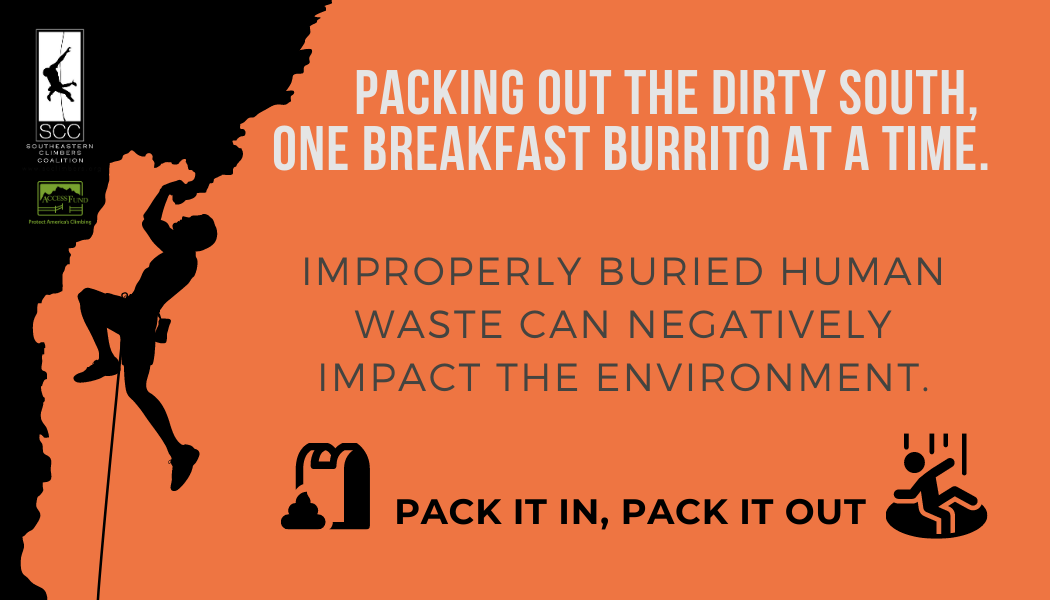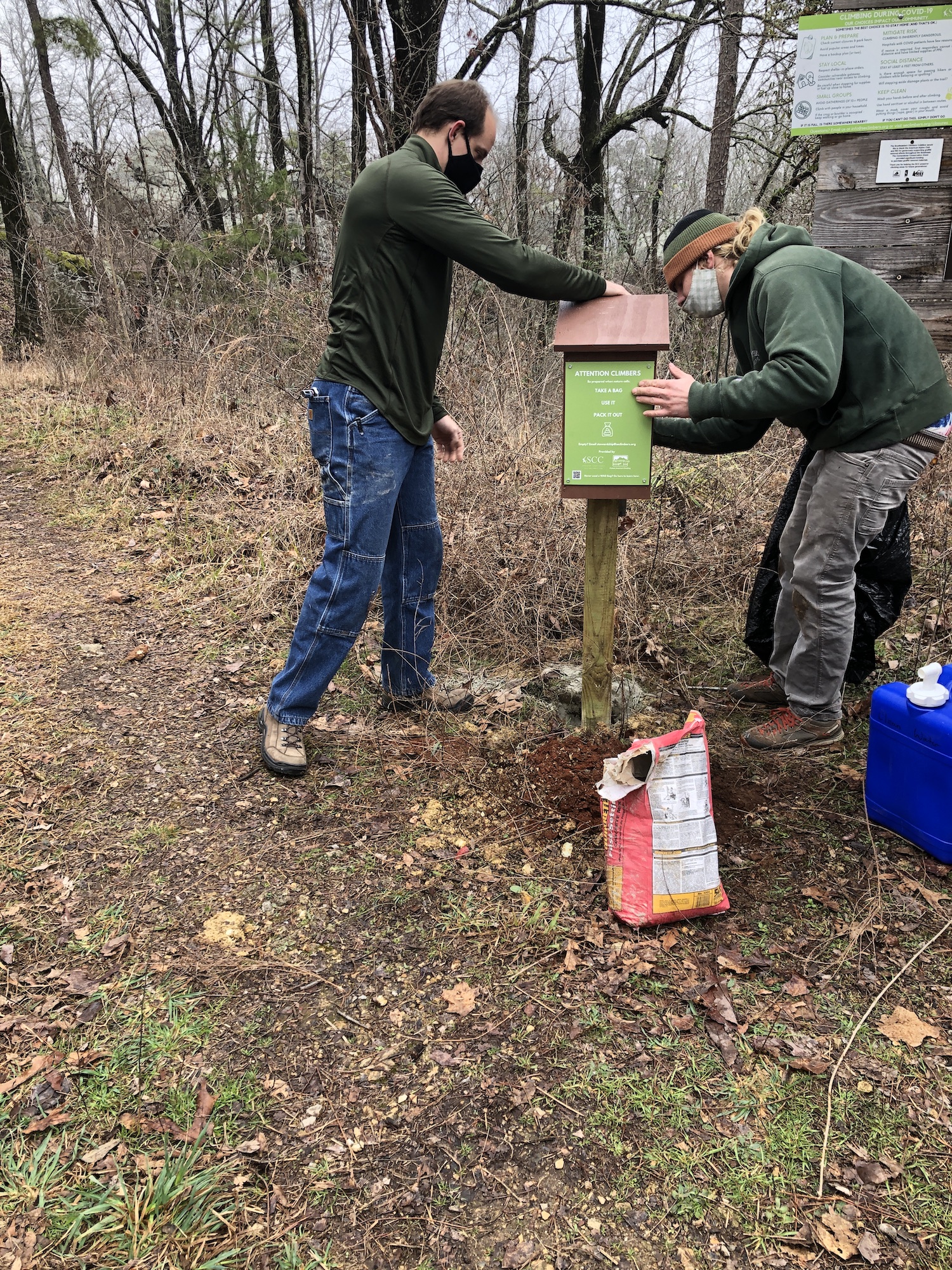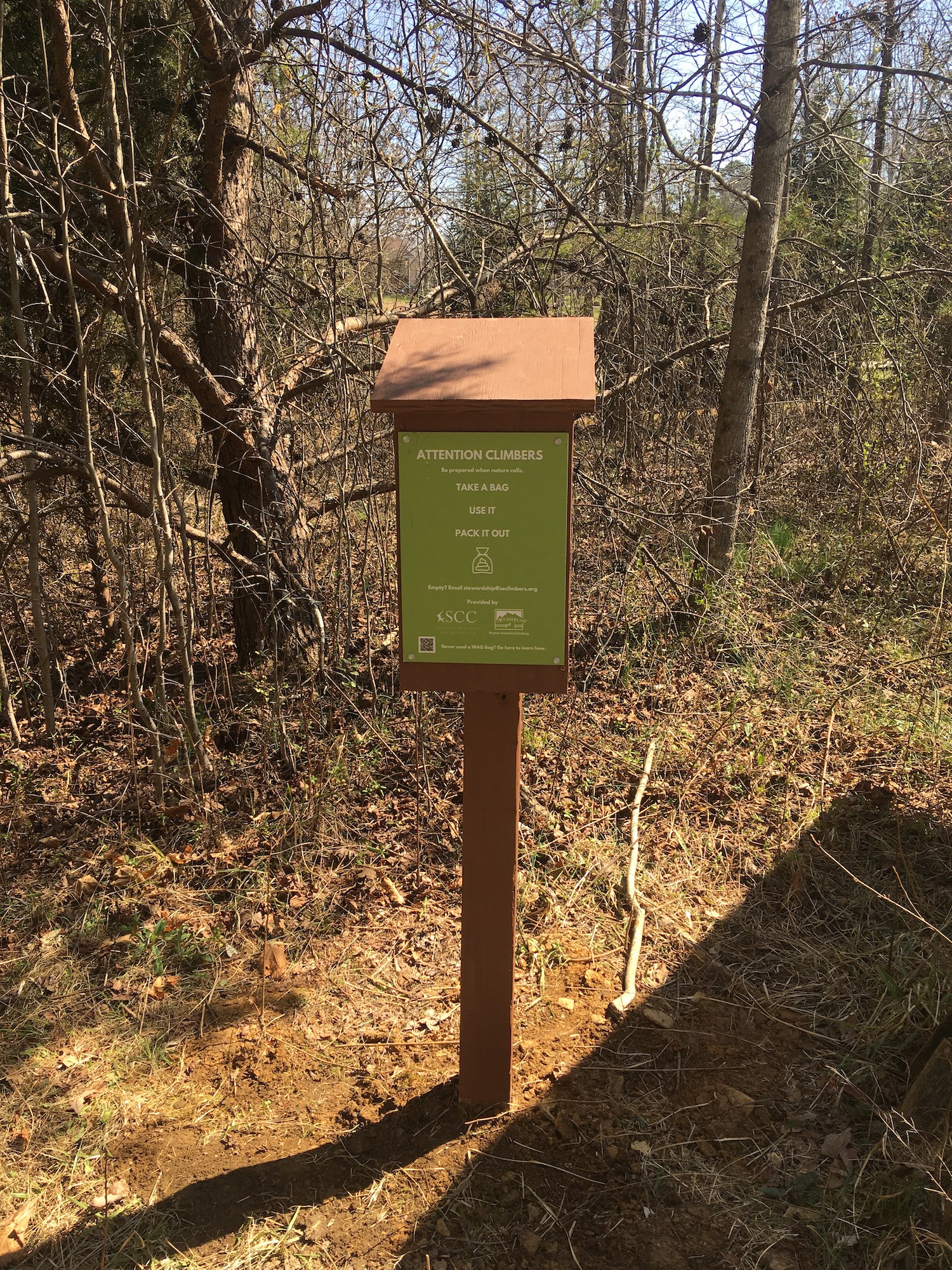
Do the royal squat. Drop a deuce. Make a deposit at the porcelain bank. Pinch a loaf. Squeeze the cheese. Unload some timber. However you want to say it, we all poop.
If you have never stumbled upon a pile of poo or toilet paper flower at a climbing area, consider yourself lucky. As high-use areas grow even more popular, human waste management becomes a major access issue.
The concept of using a WAGBag to pack out your poop is more common in the alpine or desert environments where the soil lacks the microorganisms to break down human waste. When I talk to folks about using WAGbags in the Southeast, I am often met with questions like “can’t I just dig a cat hole” or “waste decomposes so quickly here.” It’s true, relieving yourself in a properly dug cat hole is a totally acceptable LNT practice in densely forested areas. However, during peak climbing season, it is not uncommon to see a heavy concentration of cat holes near the trailhead or clifline which creates a stinky situation. In circumstances where there are no permanent toilet facilities or a proper cat hole can not be dug (like within 200 feet of a water source), using a WAGBag is your best option.
So what is a WAGBag? WAG (Waste Alleviation and Gelling) Bag kits vary slightly depending on the brand, but typically include an outer zip-close bag, an inner waste bag preloaded with gelling powder, toilet paper and a hand sanitizer towelette. The powder emulsifies your doo doo while the double bag system prevents any spillage and diffuses (some) of the odor. Always pack out your used WAGBag and safely despose of it in a trash recepticle. If you need a visual, check-out this handy video from Leave No Trace for a demo.
Thanks to a grant from the Access Fund, SCC has built 6 WAGBag stations and is in the process of installing them at Rocktown, Deep Creek, TWall, Denny Cove and Hospital Boulders. These stations will provide free WAGBags to climbers to use when needed. Stay tuned for Spring Trail Day announcements for volunteer opportunities to help with installation. We will also need additional volunteer support to keep these stations stocked, so if you live near one of these crags and are interested in helping out, email stewardship@seclimbers.org.

Volunteers installing a station at Hospital Boulders and Deep Creek.

Thanks to a grant from the Access Fund, SCC has built 6 WAGBag stations and is in the process of installing them at Rocktown, Deep Creek, TWall, Denny Cove and Hospital Boulders. Stay tuned for Spring Trail Day announcements as we will need volunteers to help with installation. We will also need additional volunteer support to keep these stations stocked, so if you live near one of these crags and are interested in helping out, email stewardship@seclimbers.org.
SCC has worked to install composting toilets at several climbing areas throughout the region; however, some management mandates make this a less feasible option. While we will continue to advocate for permanent toilet facilities at some crags, normalizing the use of WAG Bags will provide a solution for when there are no nearby toilet facilities. In an ideal world, “go” before you go, but its a good idea to grab a free WAGbag to keep in your pack and for when nature calls unexpectedly!
Special thanks to Joe Gruss for helping us build these boxes and to Access Fund for supporting this project!
Resources:
Would like to come by on Sunday (Mother’s Day) How do I access the parking lot?